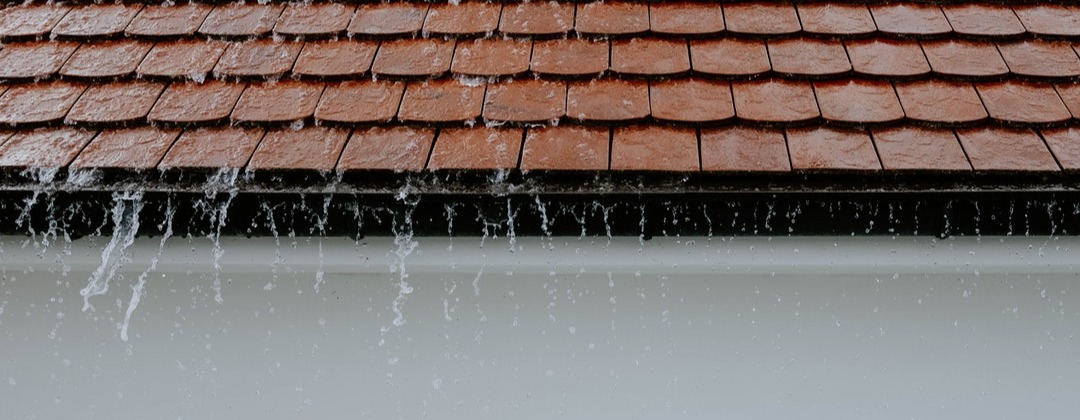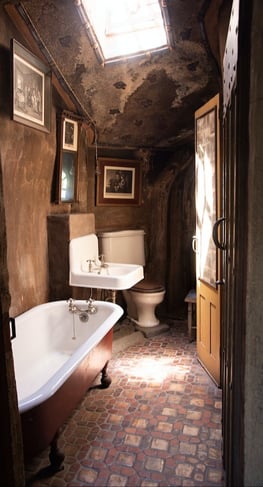Detecting Waterproofing Failures: 7 Indicators in Commercial Buildings
11 minutes read

In interstellar research, scientists consider water a sign of life. In commercial buildings, it’s a sign of destruction.
There's significant value in preventing leaks and excess moisture from entering a building envelope. Commercial water damage often stems from improper installation or selecting the wrong waterproofing product, like a sheet membrane. Even the best-constructed buildings may eventually face waterproofing issues.
The consequences can be expensive. Property owners face direct costs such as hiring contractors for repairs, replacing materials, and dealing with mold cleanup. Indirect costs can also affect subcontractors, including lost productivity, damage to their reputation, and potential liability for safety concerns.
Understanding water damage is crucial, whether you're involved in restoration or concerned about your previous work's impact on your reputation.
7 Waterproofing Failures: Foundations, Windows, Walls, & More
Here are seven signs that your commercial building project has water damage that demands your attention:
- Changes to ceilings & walls
- Coating delamination
- Mold & odor
- Rust (& jacking)
- Spalling
- Efflorescence
- Condensation
1. Changes to Ceiling & Walls
The good thing about most commercial water damage is that you can see it on the surface. Discoloration and movement can occur in ceiling panels, windows, and other wall components.
Water intrusion at higher levels can mean there are rotting facades, damaged trim, or accelerated wear and tear on the roofing system. On the walls, it’s also a sign of a serious building envelope problem.
There are several signs of moisture in walls that can help you detect water damage:
- Stains – Color changes on patches of interior and exterior walls, ceilings, or floors indicate prolonged exposure to moisture.
- Deformation – In the later stages of failure, the same area can also appear bloated, flaky, or warped.
- Bubbling, cracking, or peeling paint – Common but lesser known, this is often a result of water seeping into walls and reducing adhesion.
Any time a building’s supports or other materials start resembling a shapeshifter or chameleon, an envelope ingress is likely to blame.
2. The Floor Is Deformed
In commercial properties, it’s important to look down too (particularly if the building has a sprinkler system). A leak from above can damage the subflooring in the long term and pose a slipping hazard in the short term.
Even if the draining system looks like it’s working normally, seepage can happen anywhere water comes into contact with building components.
Signs of a water-damaged floor include:
- Warped flooring: Wood or laminate may warp or curl at the edges.
- Spongy subfloor: That’s not extra pep in your step – a springy surface indicates damage beneath.
- Buckling or heaving tiles: Flooring may become uneven due to moisture affecting the adhesive or substrate.
3. Mold, Mildew, & Odor
Unfortunately, where there are undiagnosed leaks, there’s often mold. Constant moisture creates the perfect environment for mold to grow, and it often accumulates when there’s a leaky pipe in a kitchen, bathroom, or laundry room. In commercial properties, mold can also be an issue in the ceiling or floors where there’s sitting water.
Prolonged exposure to mold and mildew can cause health issues for humans. And because mold feeds on organic matter, it can structurally compromise your building. Mildew isn’t as dangerous in this aspect, but can still damage textiles and other materials.
Mildew is a surface fungus, but mold can grow anywhere. Look out for not just visible growths, but also any materials that are discolored. Even if you can’t see the mold, a musty or earthy odor may signal the presence of this dangerous growth.
Water damage in a commercial building is grounds for immediate action – exposure for 1-2 days is enough for harmful microorganisms to start growing.
4. Rust (& Rust Jacking)
Any iron-based material – including the steel used to reinforce concrete – is vulnerable in moist environments. When rusting happens, aesthetics are the first thing to go, but hardly the last.
Rust jacking occurs when the iron oxide expands, exerting pressure on surrounding materials. This in turn creates cracking and displacement.
The trademark brown hue of rust makes it an easy sign of water damage to spot. A common example in commercial construction is the window lintel – you can find step cracks in the masonry if water ingress has occurred.
Premature rusting can be an omen of water damage, even if your concrete and foundations seem fine. If appliances and HVAC equipment in attics or below-ground or areas are corroding, there may be a larger issue at hand. Often this is an old leak that was never fixed. Just like with moldy floors, you’ll have to assess the damage and determine what’s salvageable.
If nobody addresses the problem, the rust-jacked areas will continue building pressure until pieces pop off. This results in sign #5:
5. Spalling Concrete
Spalling refers to the flaking or chipping of concrete surfaces. You could also call it the three stages of doom for a concrete build:
- It starts off as an eyesore for potential customers …
- … Spreads enough to become a tripping or falling-debris hazard …
- … And accelerates the structural failure of the concrete.
It’s easy to identify spalled concrete, but less so the source. Look at these areas or recent activities to determine whether one or more is to blame for the cracking:
- Rust & rust jacking – see #4
- Improper surface prep during repair – this reduces adherence, increasing the odds it’ll pop off prematurely
- Exposure during the freeze-thaw cycle – water enters the concrete, freezes, expands, and chips away at the surface

6. Efflorescence
Ever noticed the staining on an old building?
This is efflorescence, the migration of salt to a porous surface, where it forms a coating. You know it as a white, powdery substance common on stone masonry or concrete surfaces.
Efflorescence might look innocent (and it is on its own), but this residue can indicate long-term building envelope breakdown. That’s because the salt deposit forms after – you guessed it – the evaporation of water.
To check for efflorescence, examine any porous structural materials in the building:
- Concrete
- Stone
- Brick
- Wood
7. Condensation
Yes, even simple science can be an indicator of poor building health.
Many commercial-grade windows consist of multiple panes put together, which means moisture in the walls can turn into condensation within the windows.
An unusually high level of condensation on walls, windows, or pipes is a cue to check the area’s humidity level. Condensation can be a precursor to other evidence of water problems.
In these cases, the most common fixes are optimizing the building ventilation and acting quickly on any moisture sources.
|
What are the most effective methods for repairing the different types of waterproofing failures mentioned (e.g., rust jacking, spalling concrete, efflorescence)? For rust jacking, start by addressing the moisture source that’s causing the rust. Remove the affected rusted material, replace it with new reinforcement, and apply a corrosion-inhibiting primer. Proper waterproofing is essential to prevent future rust problems. To repair spalling concrete, remove the damaged sections and apply a new layer of concrete. Use a high-quality mix and prepare the surface properly before applying. For efflorescence, clean the affected area with a dry brush or a solution of water and vinegar. After cleaning, address the moisture source and apply a sealant to prevent further salt deposits. How can property owners or managers implement preventative measures to avoid these common waterproofing failures in the first place? Property owners and managers can prevent waterproofing failures by conducting regular maintenance and inspections to catch potential issues early. It’s important to use qualified professionals for the installation of waterproofing systems and adhere to best practices. Opt for high-quality materials suited to specific environmental conditions and perform regular checks on drainage systems to prevent water buildup. Properly sealing joints, cracks, and penetrations also helps in avoiding moisture ingress. Are there specific materials or products recommended for improving waterproofing in commercial buildings, and how do their costs compare to traditional methods? Several advanced materials and products are recommended for improving waterproofing in commercial buildings, such as polymer-modified cementitious coatings, liquid-applied membranes, and reinforced waterproofing membranes. These often outperform traditional methods like asphalt-based systems. While the upfront cost of these advanced materials may be higher, they generally offer better long-term protection and lower maintenance costs, potentially leading to overall savings by reducing the risk of extensive damage and costly repairs. |
Commercial Property Water Damage: What Can You Do About ?
Before you swear off swimming pools and Aquafina forever, relax: This news isn’t meant to stress you out. Instead, let it reinforce the importance of a good commercial waterproofing system and proper application. Some experts say sloppy technique accounts for 90% of all waterproofing membrane failures.
Here’s a good way to prioritize waterproofing in your building philosophy: Consider the wake already left by water by the time it reaches the interior. It’s already affected those layers and materials, too.
The sooner the seven signs are discovered in a building’s walls, ceilings, and foundation, the sooner mitigation efforts can occur. You can limit the cost of repairs, move to the next job sooner, and earn a reputation as a safety-first builder.
For more free resources on commercial construction materials and products, see our blog center:


